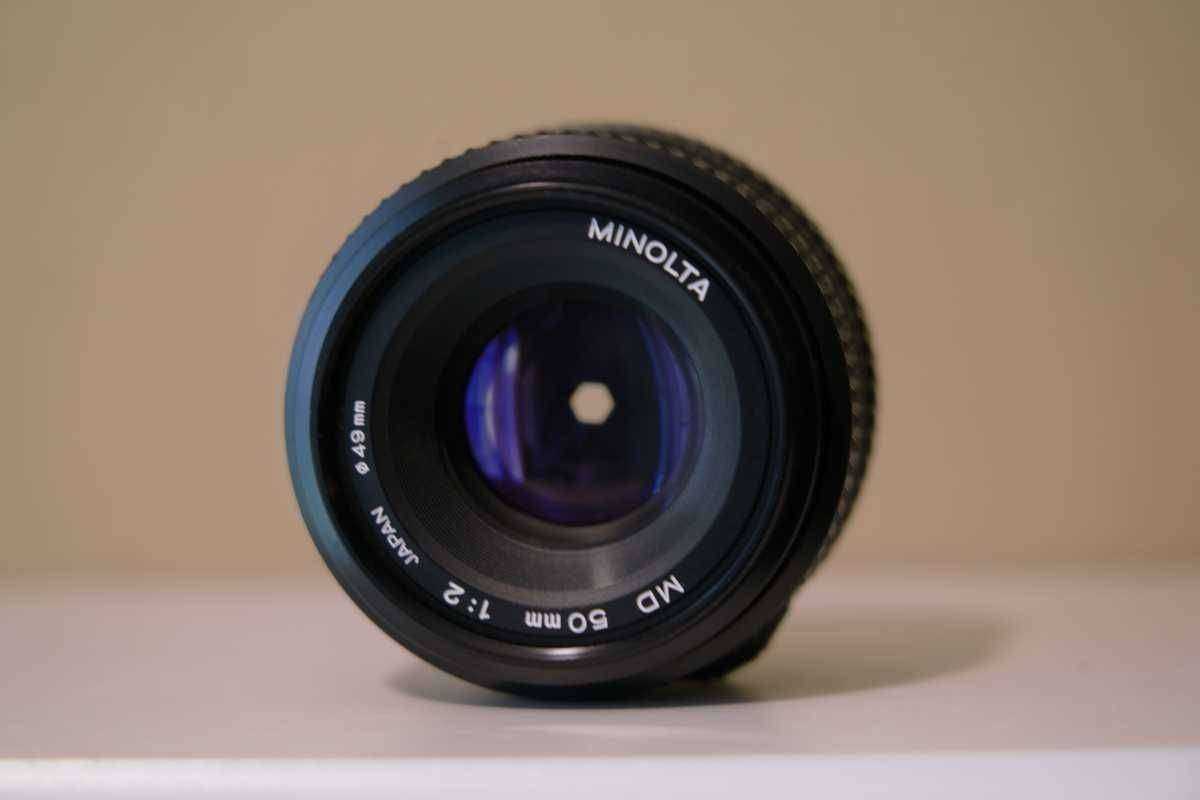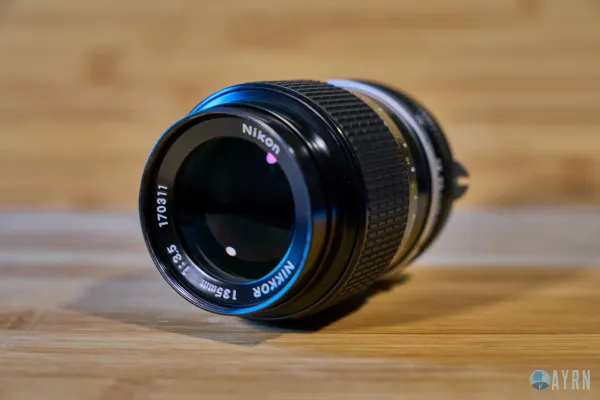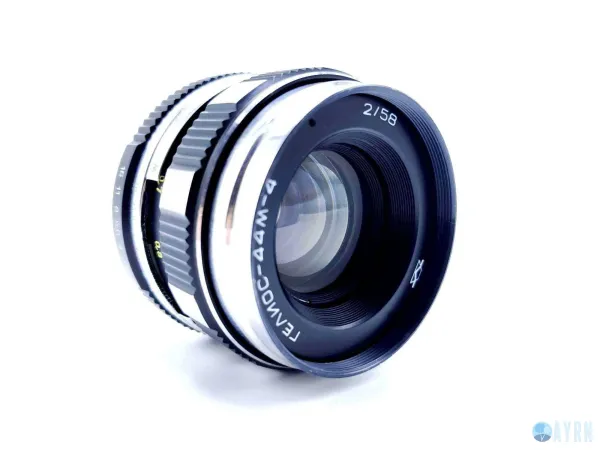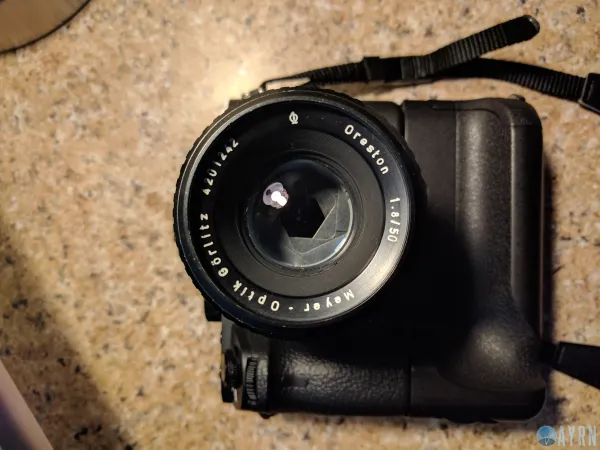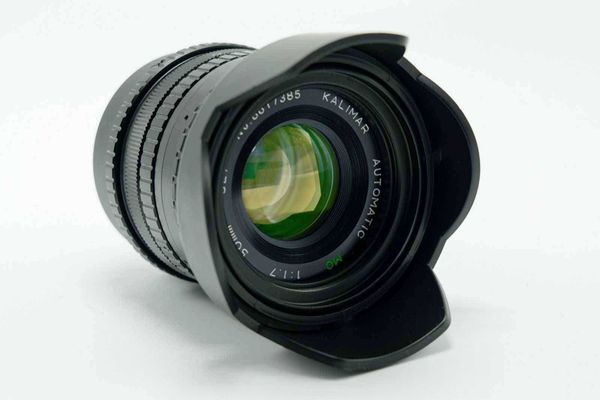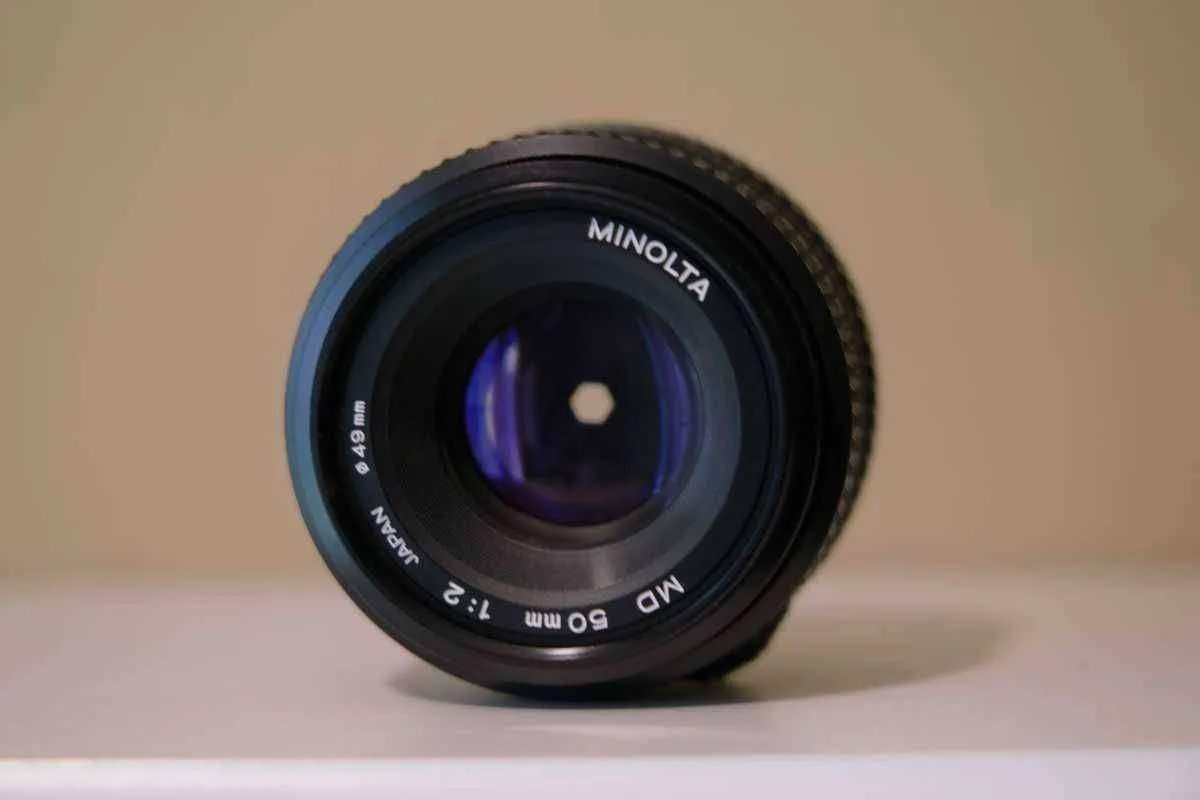
Minolta 50mm F/2 MD III Lens
The Minolta 50mm F/2 MD III lens stands as a testament to Minolta's legacy of producing high-quality optics. With its solid build, excellent optical performance, and versatile focal length, this lens is a reliable choice for photographers seeking sharpness, clarity, and timeless image rendering.
First Impressions
The moment you pick up the Minolta 50mm F/2 MD III lens, you can immediately feel the quality craftsmanship that Minolta was known for during the film era. This compact, lightweight prime lens fits comfortably in your hand, with a robust metal mount and a smooth focus ring that turns with just the right amount of resistance. Unlike many modern lenses, which can feel somewhat plasticky, the MD III has a reassuring solidity that suggests it was built to last.
Unboxing the lens, you’re greeted with a minimalist design—no frills, no unnecessary embellishments, just a clean, functional aesthetic. The compact size and light weight make it an ideal companion for street photography or travel, where every ounce counts. This lens is part of Minolta's MD series, the final iteration of the Rokkor line, and it shows in the attention to detail and build quality.
Specifications
| Specification | Details |
|---|---|
| Model | Minolta 50mm F/2 MD III |
| Type | Prime Standard |
| Focal length | 50mm |
| Max aperture | f/2 |
| Min aperture | f/16 |
| Angle of view | 47° (Full-frame) |
| Optical formula | 6 Elements in 5 Groups |
| Minimum focal dist. | 0.45m (1.48 ft) |
| Filter thread size | 49mm |
| Lens hood | Optional screw-in |
| Mount type | Minolta MD |
Features
| Feature | Details |
|---|---|
| Focus ring | Manual |
| Autofocus | No |
| Image stabilization | No |
| Optical coating(s) | Multi-coating |
| Front element rotation | Yes |
| Internal focusing | No |
| Lens extension while focusing | Yes |
| Aperture ring | Yes |
| De-clickable aperture | No |
| Architecture | Metal mount, plastic barrel |
History and Background
The Minolta 50mm F/2 MD III was introduced as part of the last generation of Minolta’s manual focus lenses in the early 1980s. The MD series represented Minolta's commitment to refining their already successful Rokkor line, focusing on reducing the size and weight of the lenses while maintaining, or even improving, optical performance. This particular lens, the F/2 version, was designed as an affordable, yet capable, standard lens option, positioned just below the faster f/1.7 and f/1.4 models.
Despite being one of the more budget-friendly lenses in Minolta’s lineup, the 50mm F/2 MD III didn't skimp on quality. It retained the excellent optical performance that Minolta lenses were known for, making it a popular choice for both amateur and professional photographers who appreciated the combination of performance and portability.
Image Quality
When it comes to image quality, the Minolta 50mm F/2 MD III holds its own, even against more expensive lenses. Wide open at f/2, the lens delivers pleasing sharpness in the center, though the corners can be a bit soft. However, this softness tends to dissipate quickly as you stop down, with f/4 and f/5.6 yielding sharpness across the frame that rivals much pricier glass.
The lens produces images with good contrast and natural color rendering, a hallmark of Minolta optics. The multi-coating on the glass elements helps to control flare and ghosting, making it a solid performer in backlit situations. Chromatic aberration is well-controlled, particularly for a lens of this vintage, and any slight fringing can be easily corrected in post-processing.
Sharpness
Sharpness is where the Minolta 50mm F/2 MD III really shines, especially given its modest price point. At its maximum aperture of f/2, the center sharpness is quite good, making it a viable option for low-light photography and portrait work where you want a soft background. As you stop down to f/4 and beyond, the sharpness improves significantly, providing crisp details that hold up even when zoomed in.
For landscape or architecture photography, where edge-to-edge sharpness is more critical, you'll likely want to shoot at f/5.6 or f/8 to achieve the best results. The lens’s performance at these apertures is impressive, especially considering its compact size and lightweight construction.
Bokeh
The bokeh produced by the Minolta 50mm F/2 MD III is smooth and pleasant, though not as creamy as some of its faster siblings. At f/2, the background blur is soft, with out-of-focus highlights rendered as gently rounded discs. This makes it a good choice for portraits or close-up shots where you want to isolate your subject from the background.
However, the bokeh can take on a slightly busy character in more complex scenes, particularly if there are bright highlights or intricate patterns in the background. That said, for most casual photography, the bokeh quality is more than satisfactory, adding a touch of artistry to your images without overwhelming the composition.
Build Quality
The Minolta 50mm F/2 MD III is a study in efficient design. While it’s not as hefty as some of the earlier Rokkor lenses, it still feels solid and well-constructed. The metal lens mount ensures a secure fit on your camera, while the plastic barrel helps keep the overall weight down. The focus ring is well-damped, providing a smooth, precise focusing experience that’s crucial for manual focus work.
One area where the MD III might fall short for some users is the lack of weather sealing. This isn’t uncommon for lenses of its era, but it’s something to keep in mind if you plan to shoot in adverse conditions. Overall, the build quality is more than adequate for everyday use, and with proper care, this lens should continue to perform well for years to come.
Manual Focus Performance
Focusing manually with the Minolta 50mm F/2 MD III is a pleasure, thanks to its smooth focus ring and well-calibrated throw. The long focus throw allows for fine adjustments, making it easier to achieve critical focus, especially when shooting wide open. The lens’s relatively small maximum aperture means that depth of field is more forgiving than on faster lenses, which can be an advantage when shooting handheld or in rapidly changing conditions.
If you’re using a digital camera with focus aids like peaking or magnification, nailing focus with this lens becomes even easier. For those accustomed to autofocus lenses, there might be a learning curve, but the tactile feedback of the focus ring can quickly become addictive, encouraging a more deliberate and thoughtful approach to photography.
Feature Breakdown
The Minolta 50mm F/2 MD III is a no-nonsense lens that focuses on the essentials. It doesn’t have autofocus, image stabilization, or any of the bells and whistles that are standard on modern lenses. Instead, it offers a fast maximum aperture, a compact design, and the reliable performance that Minolta lenses are known for.
This simplicity is part of its charm—there’s nothing to distract you from the act of taking pictures. The lack of complex electronics also means there’s less that can go wrong, making this a dependable choice for photographers who value reliability and ease of use.
Pricing and Availability
The Minolta 50mm F/2 MD III is a bargain in the world of vintage lenses. Depending on its condition and whether it comes with original accessories, you can expect to pay between $30 and $70 for this lens on the used market. It’s widely available, thanks to the popularity of Minolta cameras during the film era, and you shouldn’t have much trouble finding one in good condition.
Given its performance, the MD III offers excellent value for money, making it a great option for those looking to explore vintage lenses without breaking the bank. Whether you’re using it on a classic Minolta film camera or adapting it to a modern digital body, this lens is a worthwhile addition to any photographer’s kit.
Conclusion
The Minolta 50mm F/2 MD III is a hidden gem in the world of vintage photography. It may not have the cachet of faster, more expensive lenses, but it delivers solid performance in a compact, lightweight package. Whether you’re a seasoned photographer looking to add a classic prime lens to your collection or a beginner exploring the world of manual focus, the MD III is an excellent choice.
Its combination of sharpness, pleasing bokeh, and reliable build quality makes it a versatile lens for a variety of shooting situations. And at its current price point, it’s hard to find a better deal in the world of vintage glass. If you’re in the market for a 50mm prime, the Minolta 50mm F/2 MD III deserves serious consideration.
Images of the Minolta 50mm F/2 MD III Lens



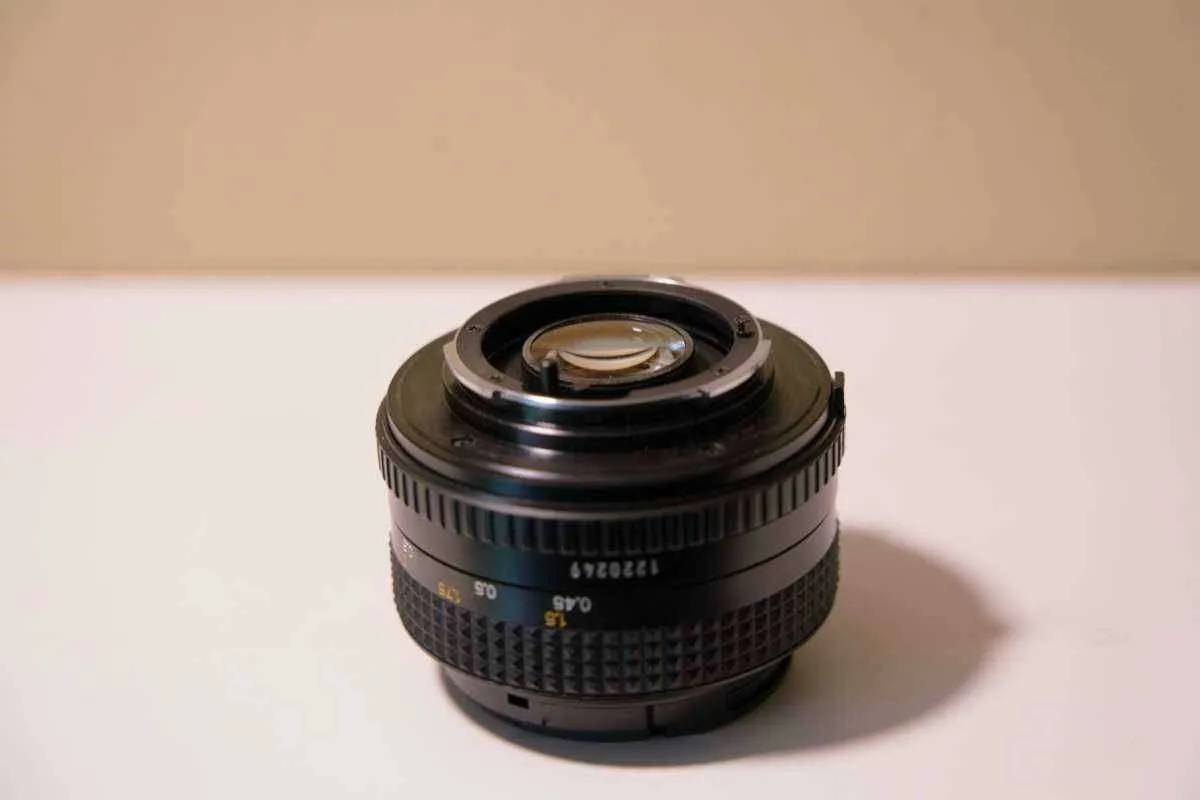
Images of the Minolta 50mm F/2 MD III Lens


